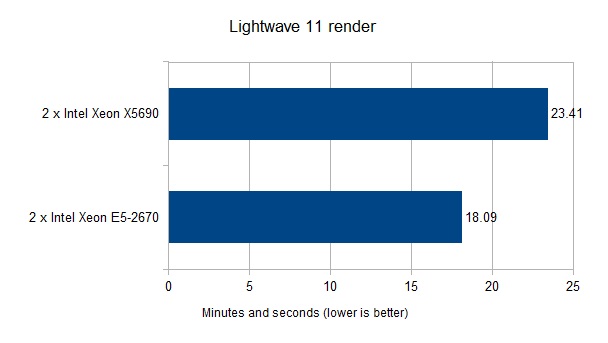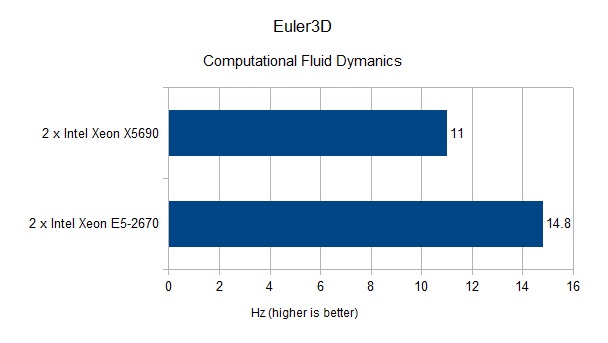Now that Intel has officially launched its brand new range of Xeon E5-2600-series processors we thought it would be interesting to share some of the benchmarking we've been doing at Boston Labs.
The Xeon E5-2600-series is particularly exciting because they are the first 8-core Intel CPUs for dual-processor servers and workstations. In addition, each new CPU has a brand new integrated memory controller that can address up to four channels simultaneously. The new CPUs also debut several new exciting technologies, such as PCI Express 3.0, which provides double the bandwidth of PCI Express 2.1 to compatible expansion cards.
For this blog post we thought it would be interesting to see what performance and power saving benefits these new processors bring to the market when compared to the previous generation of Xeon 5600-series processors.
For this reason we built two similarly priced systems, one based around a pair of Xeon E5-2670 processors, and the other a pair of previous generation Xeon X5690s. Each E5-2670 processor has eight physical cores and eight additional logical cores courtesy of Hyper-Threading, all running at 2.6GHz. In comparison, each X5690 has six physical cores and six logical cores, each running at 3.46GHz.
The first benchmark that we ran, Cinebench R11, is based on the popular Cinema 4D modelling and rendering package. This test clearly shows that despite running 866MHz slower, the two extra cores in each E5-2670 are of a real benefit, as they completed the test 24 per cent faster than the X5690s.

We also ran a couple of other rendering tests on the two systems, Lightwave 11 and Terragen 2. The E6-2670s again proved much faster than the X5690s in these two applications as you can see in the graphs. Please note that unlike the Cinebench graphs, the results here are the time it took each system to complete the render, shown in minutes and seconds. Thus a shorter time indicates better rendering performance.


The final benchmark in our arsenal is Euler3D, which uses CFD (computational fluid dynamics) to model how air flows around part of the wing of an aircraft. The benchmark we use expresses its results as the frequency of how many times it can analyse the model per second, with a higher number of Hz indicating superior performance. In this particular test the E5-2670s once again proved much faster than the X5690s, outputting a benchmark score of 14.8Hz versus just 11Hz, an astonishing 35 per cent faster.

Conclusion
Intel clearly made the right decision to sacrifice clock speed in favour of adding more cores, cache memory and memory bandwidth to the new Xeon E5-2600-series. This is because all of our benchmarks show the similarly priced E5-2670s outperforming the higher frequency X5690s, sometimes by as much as 35 per cent.
As such, whether you're looking to invest in a new Quattro server, Venom workstation or HPC solution then it should clearly be based on one of the new models in the Intel Xeon E5-2600-series.
Finally, please let us know what you think of the selection of benchmarks we used in this article. We're always interested to hear from Boston customers, and would be happy to provide more info or run custom benchmark scripts on specific configurations on request.